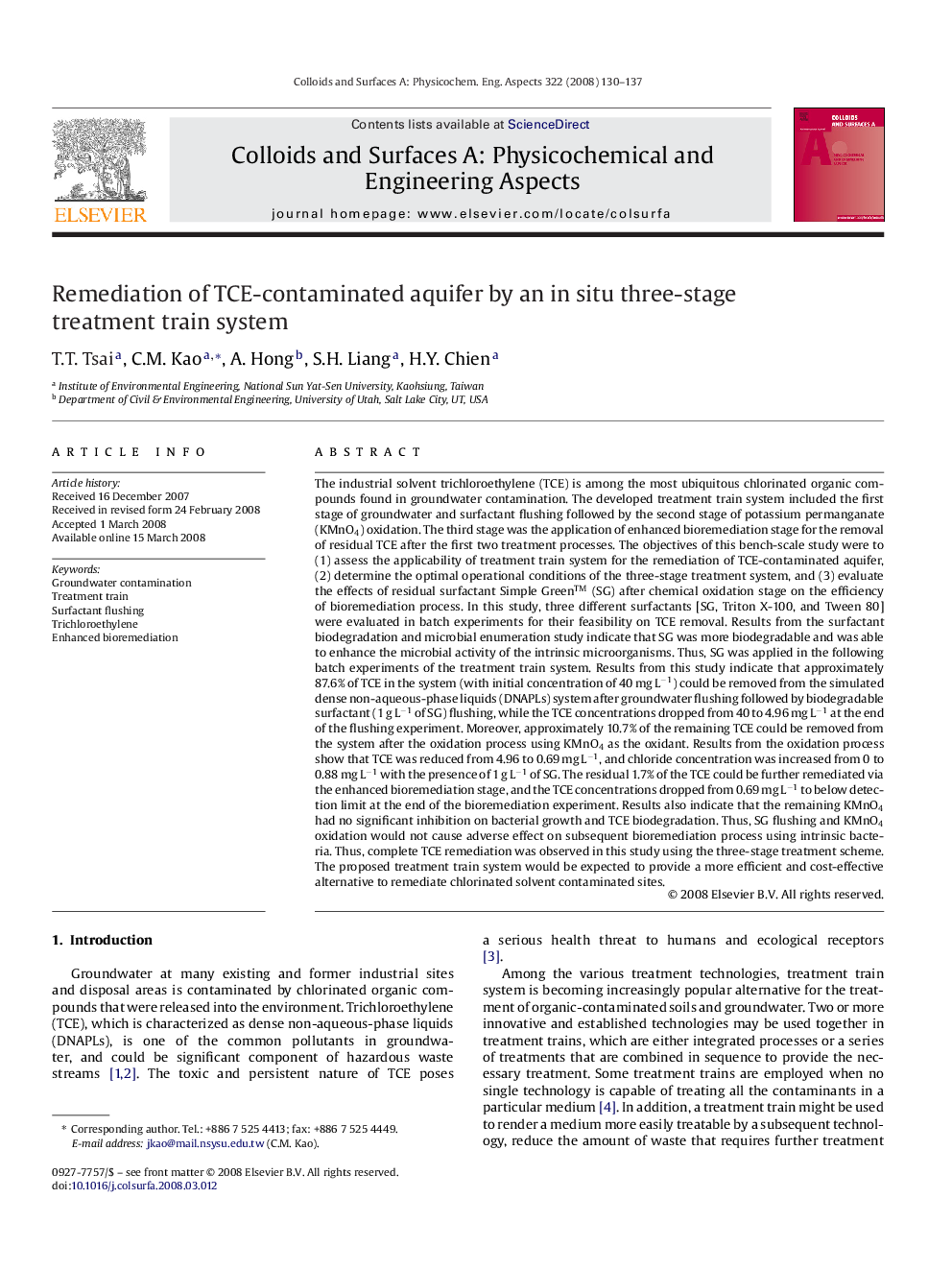| کد مقاله | کد نشریه | سال انتشار | مقاله انگلیسی | نسخه تمام متن |
|---|---|---|---|---|
| 596503 | 1454050 | 2008 | 8 صفحه PDF | دانلود رایگان |

The industrial solvent trichloroethylene (TCE) is among the most ubiquitous chlorinated organic compounds found in groundwater contamination. The developed treatment train system included the first stage of groundwater and surfactant flushing followed by the second stage of potassium permanganate (KMnO4) oxidation. The third stage was the application of enhanced bioremediation stage for the removal of residual TCE after the first two treatment processes. The objectives of this bench-scale study were to (1) assess the applicability of treatment train system for the remediation of TCE-contaminated aquifer, (2) determine the optimal operational conditions of the three-stage treatment system, and (3) evaluate the effects of residual surfactant Simple Green™ (SG) after chemical oxidation stage on the efficiency of bioremediation process. In this study, three different surfactants [SG, Triton X-100, and Tween 80] were evaluated in batch experiments for their feasibility on TCE removal. Results from the surfactant biodegradation and microbial enumeration study indicate that SG was more biodegradable and was able to enhance the microbial activity of the intrinsic microorganisms. Thus, SG was applied in the following batch experiments of the treatment train system. Results from this study indicate that approximately 87.6% of TCE in the system (with initial concentration of 40 mg L−1) could be removed from the simulated dense non-aqueous-phase liquids (DNAPLs) system after groundwater flushing followed by biodegradable surfactant (1 g L−1 of SG) flushing, while the TCE concentrations dropped from 40 to 4.96 mg L−1 at the end of the flushing experiment. Moreover, approximately 10.7% of the remaining TCE could be removed from the system after the oxidation process using KMnO4 as the oxidant. Results from the oxidation process show that TCE was reduced from 4.96 to 0.69 mg L−1, and chloride concentration was increased from 0 to 0.88 mg L−1 with the presence of 1 g L−1 of SG. The residual 1.7% of the TCE could be further remediated via the enhanced bioremediation stage, and the TCE concentrations dropped from 0.69 mg L−1 to below detection limit at the end of the bioremediation experiment. Results also indicate that the remaining KMnO4 had no significant inhibition on bacterial growth and TCE biodegradation. Thus, SG flushing and KMnO4 oxidation would not cause adverse effect on subsequent bioremediation process using intrinsic bacteria. Thus, complete TCE remediation was observed in this study using the three-stage treatment scheme. The proposed treatment train system would be expected to provide a more efficient and cost-effective alternative to remediate chlorinated solvent contaminated sites.
Journal: Colloids and Surfaces A: Physicochemical and Engineering Aspects - Volume 322, Issues 1–3, 5 June 2008, Pages 130–137